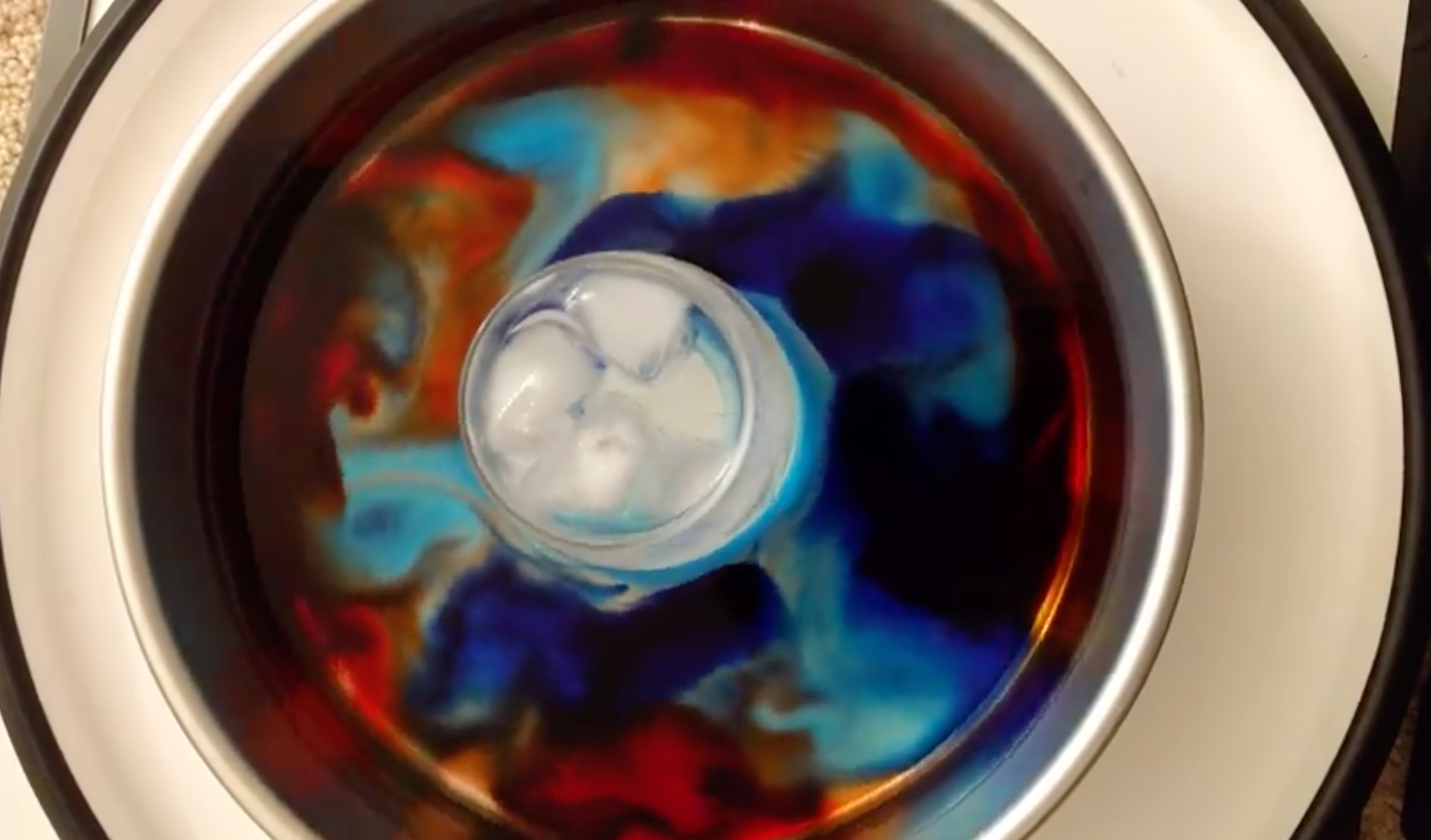- Thu 26 April 2018
- courses
- Spencer Hill
- #colleges, #undergraduate, #graduate, #curriculum

Students in the background at one of Prof. Mitchell’s demonstration stations. They had just finished at the DIYnamics station, where we used our simple tables to teach some of the basic properties of rotating fluids. Spencer can’t multi-task well enough to have gotten a picture of the students while they were at our station, but they really were just there, we swear!
On April 26, 2018, DIYnamics marked a major milestone by being incorporated into undergraduate and graduate-level curricula. Prof. Jonathan Mitchell of the UCLA Department of Earth, Planetary, and Space Sciences and Department of Atmospheric and Oceanic Sciences (that’s a mouthful!) invited us to use the DIYnamics materials as part of a “lab demos” day in his course to teach some basic principles of rotating fluids.
With only one of us (Spencer) there, it was difficult to get pictures of the students at the DIYnamics station in the moment. So the picture above showing the aftermath —- with dye in both the rotating and non-rotating tables, and the students moved on to the next station —- will have to suffice.
This shows that the DIYnamics materials can be effective teaching tools from the elementary school to graduate levels! Of course, the level of complexity of the accompanying explanations has to be tailored to the audience: for early elementary school students, we’re content with the students recognizing that things are different when you rotate or not, whereas at the university level we’re connecting the demonstations to concepts like the Coriolis parameter, solid body rotation, spinup times, the Rossby number, and baroclinic instability. But the physical demonstrations we perform are essentially identical across these levels!
Big thanks to Prof. Mitchell for allowing us to take part in his class, Alex Gonzalez of UCLA and the Jet Propulsion Laboratory for his assistance with the DIYnamics station, Henry Gonzalez, Emily Hawkins, and Helen Parish of the EPSS department for their work on the awesome stably stratified convection station, and to all of the students for indulging us.
More DIYnamics at the university level
Prof. Mitchell’s class was a great way to inaugurate DIYnamics’ use at the college teaching level, and we’re excited for him to (hopefully!) have us back later in the quarter to help him teach “baroclinic instability”…they haven’t gotten that far in the lectures yet. But our expansion into the university level isn’t stopping there!

Snapshot from the video that Prof. Adames posted to his Facebook page using the DIYnamics table to (kind of) demonstrate baroclinic instability. Thanks for trying us out, Prof. Adames! We’ll help you work out the kinks of getting that demonstration working properly. Looks awesome!
Prof. Andrew Stewart of the UCLA AOS Department and Prof. Ángel Adames of the University of Michigan Department of Climate and Space Science have both purchased and successfully built their own DIYnamics tables and intend to use them in courses they teach, also at the university level. Thanks both for giving us a try! We’re eager to see how their DIYnamics-based teaching pans out.
As much as we DIYnamics team members love putting on demonstrations ourselves, there are only so many of us, compared to millions of students around the world that could learn from these materials. That’s why we always try to leave behind a complete DIYnamics rotating table kit behind at the schools we visit. And that’s why efforts like these by other teachers and professors to use our materials themselves are the most important thing moving forward!
